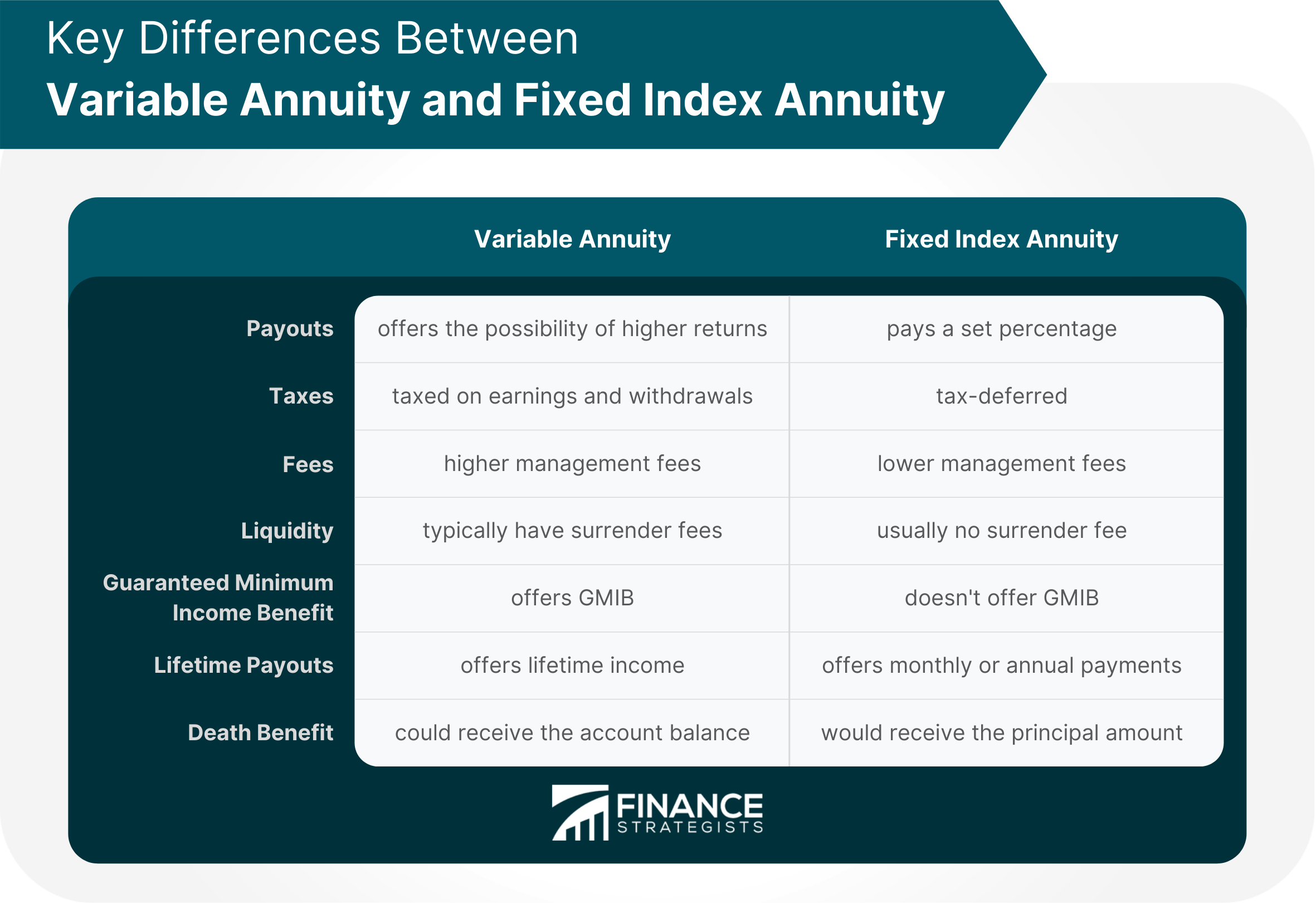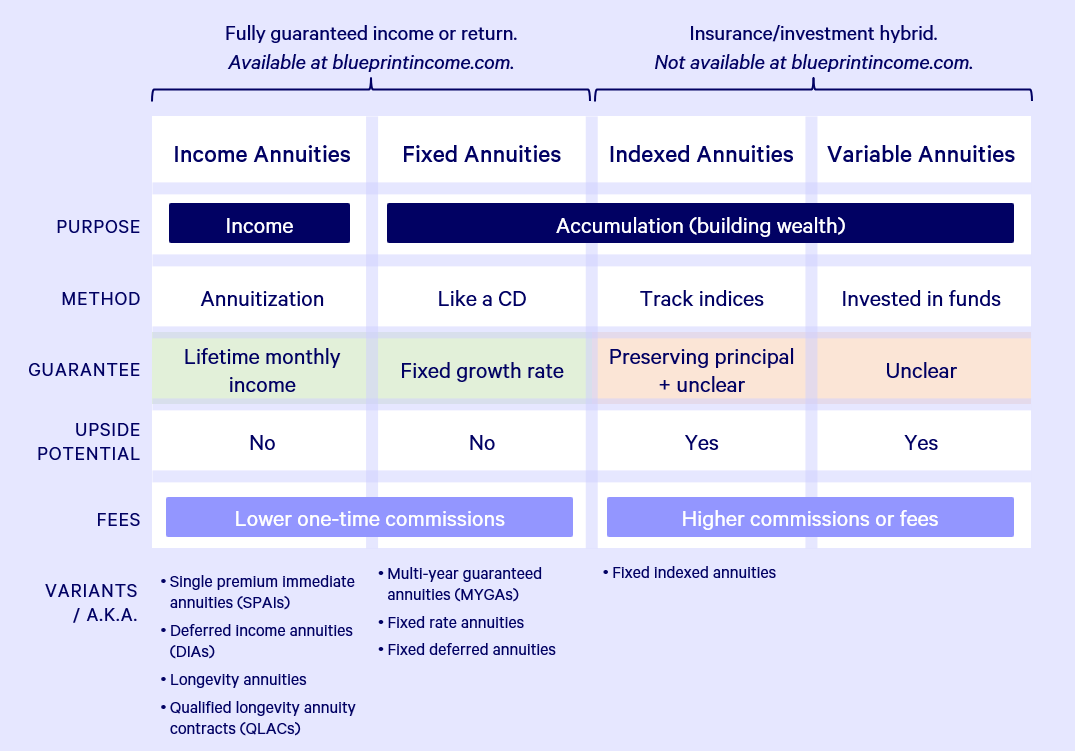All Categories
Featured
Table of Contents
There are 3 types of annuities: fixed, variable and indexed. With a repaired annuity, the insurance provider assures both the price of return (the rates of interest) and the payout to the investor. The rate of interest on a taken care of annuity can change gradually. Commonly the rates of interest is repaired for a variety of years and afterwards changes regularly based upon current rates.
With a deferred set annuity, the insurance policy company consents to pay you no less than a specified rate of passion during the time that your account is growing. With an instant fixed annuityor when you "annuitize" your deferred annuityyou obtain a predetermined fixed amount of cash, normally on a monthly basis (comparable to a pension plan).
While a variable annuity has the advantage of tax-deferred growth, its annual expenditures are most likely to be a lot greater than the expenses of a common mutual fund. And, unlike a dealt with annuity, variable annuities don't give any guarantee that you'll make a return on your investment. Instead, there's a threat that you might in fact shed cash.
Understanding Annuities Variable Vs Fixed A Closer Look at How Retirement Planning Works Breaking Down the Basics of Investment Plans Advantages and Disadvantages of Different Retirement Plans Why Variable Annuity Vs Fixed Annuity Matters for Retirement Planning How to Compare Different Investment Plans: A Complete Overview Key Differences Between Different Financial Strategies Understanding the Rewards of Long-Term Investments Who Should Consider Strategic Financial Planning? Tips for Choosing Variable Vs Fixed Annuities FAQs About Fixed Vs Variable Annuity Common Mistakes to Avoid When Choosing a Financial Strategy Financial Planning Simplified: Understanding Your Options A Beginner’s Guide to Indexed Annuity Vs Fixed Annuity A Closer Look at How to Build a Retirement Plan
Due to the intricacy of variable annuities, they're a leading source of investor issues to FINRA. Before purchasing a variable annuity, thoroughly reviewed the annuity's syllabus, and ask the person selling the annuity to explain every one of the product's attributes, bikers, costs and limitations. You ought to also understand exactly how your broker is being compensated, consisting of whether they're obtaining a payment and, if so, how much.
Indexed annuities are complex monetary instruments that have characteristics of both repaired and variable annuities. Indexed annuities usually use a minimal surefire rate of interest integrated with a rate of interest rate linked to a market index. Lots of indexed annuities are connected to wide, popular indexes like the S&P 500 Index. Yet some use other indexes, consisting of those that represent various other sections of the marketplace.
Recognizing the functions of an indexed annuity can be complicated. There are a number of indexing approaches companies make use of to calculate gains and, because of the range and intricacy of the approaches utilized to credit scores rate of interest, it's hard to contrast one indexed annuity to another. Indexed annuities are normally classified as one of the complying with two types: EIAs use an ensured minimum rate of interest (commonly a minimum of 87.5 percent of the premium paid at 1 to 3 percent passion), along with an additional rates of interest linked to the efficiency of one or even more market index.

Traditional capitalists who value security and security. Those nearing retirement that wish to shelter their possessions from the volatility of the supply or bond market. With variable annuities, you can purchase a selection of safety and securities consisting of supply and bond funds. Securities market efficiency identifies the annuity's worth and the return you will certainly obtain from the money you spend.
Comfy with changes in the supply market and want your financial investments to maintain pace with inflation over an extended period of time. Young and intend to prepare economically for retirement by reaping the gains in the supply or bond market over the long term.
As you're accumulating your retirement financial savings, there are numerous means to extend your money. can be particularly helpful cost savings devices due to the fact that they guarantee an earnings quantity for either a set duration of time or for the remainder of your life. Taken care of and variable annuities are 2 alternatives that supply tax-deferred development on your contributionsthough they do it in different means.
Understanding Financial Strategies A Comprehensive Guide to Investment Choices Defining Retirement Income Fixed Vs Variable Annuity Advantages and Disadvantages of Different Retirement Plans Why Annuities Variable Vs Fixed Matters for Retirement Planning Pros And Cons Of Fixed Annuity And Variable Annuity: A Complete Overview Key Differences Between Variable Annuities Vs Fixed Annuities Understanding the Rewards of Long-Term Investments Who Should Consider Strategic Financial Planning? Tips for Choosing Pros And Cons Of Fixed Annuity And Variable Annuity FAQs About Fixed Indexed Annuity Vs Market-variable Annuity Common Mistakes to Avoid When Choosing a Financial Strategy Financial Planning Simplified: Understanding What Is A Variable Annuity Vs A Fixed Annuity A Beginner’s Guide to Smart Investment Decisions A Closer Look at Fixed Vs Variable Annuity Pros And Cons
A provides a guaranteed rate of interest rate. Your contract value will raise due to the amassing of ensured rate of interest profits, indicating it will not lose value if the market experiences losses.
An includes bought the stock market. Your variable annuity's investment efficiency will certainly influence the dimension of your savings. It might ensure you'll receive a collection of payments that begin when you retire and can last the remainder of your life, provided you annuitize (start taking settlements). When you start taking annuity repayments, they will certainly rely on the annuity value at that time.
Market losses likely will lead to smaller sized payments. Any rate of interest or other gains in either sort of contract are protected from current-year tax; your tax obligation obligation will come when withdrawals begin. Let's check out the core functions of these annuities so you can choose just how one or both may fit with your general retirement approach.

A set annuity's worth will certainly not decrease because of market lossesit's regular and secure. On the various other hand, variable annuity worths will change with the efficiency of the subaccounts you elect as the marketplaces fluctuate. Profits on your repaired annuity will highly depend upon its contracted rate when purchased.
Conversely, payment on a repaired annuity purchased when rates of interest are low are most likely to pay profits at a reduced rate. If the rate of interest is guaranteed for the size of the agreement, revenues will certainly stay consistent regardless of the marketplaces or price activity. A fixed price does not mean that taken care of annuities are risk-free.
While you can't arrive at a set price with a variable annuity, you can choose to purchase conservative or hostile funds tailored to your risk level. Extra traditional financial investment options, such as short-term bond funds, can help minimize volatility in your account. Given that taken care of annuities provide an established rate, dependent upon existing rates of interest, they do not provide that very same flexibility.
Decoding How Investment Plans Work A Comprehensive Guide to Fixed Interest Annuity Vs Variable Investment Annuity What Is the Best Retirement Option? Benefits of Fixed Annuity Or Variable Annuity Why What Is A Variable Annuity Vs A Fixed Annuity Can Impact Your Future How to Compare Different Investment Plans: Simplified Key Differences Between Fixed Index Annuity Vs Variable Annuities Understanding the Risks of Long-Term Investments Who Should Consider Fixed Index Annuity Vs Variable Annuity? Tips for Choosing the Best Investment Strategy FAQs About Fixed Vs Variable Annuity Pros And Cons Common Mistakes to Avoid When Planning Your Retirement Financial Planning Simplified: Understanding Variable Annuity Vs Fixed Indexed Annuity A Beginner’s Guide to Smart Investment Decisions A Closer Look at Fixed Vs Variable Annuity

Of the its ensured growth from built up interest settlements attracts attention. Repaired interest rates offer modest growth in exchange for their assured profits. You potentially can gain more long term by taking additional threat with a variable annuity, yet you can additionally lose money. While dealt with annuity agreements stay clear of market threat, their compromise is less development potential.
Investing your variable annuity in equity funds will give more prospective for gains. The fees connected with variable annuities may be higher than for various other annuities.
The insurer might impose abandonment charges, and the internal revenue service may impose an early withdrawal tax obligation penalty. Surrender costs are described in the contract and can vary. They start at a certain percentage and after that decline with time. The surrender charge may be 10% in the first year yet 9% the following.
Annuity profits undergo a 10% early withdrawal tax obligation charge if taken before you reach age 59 unless an exception applies. This is imposed by the IRS and relates to all annuities. Both repaired and variable annuities provide alternatives for annuitizing your balance and turning it right into an ensured stream of life time revenue.
Exploring the Basics of Retirement Options Key Insights on Immediate Fixed Annuity Vs Variable Annuity Defining Fixed Vs Variable Annuity Pros And Cons Features of Fixed Vs Variable Annuity Pros Cons Why Choosing the Right Financial Strategy Matters for Retirement Planning Fixed Annuity Or Variable Annuity: How It Works Key Differences Between Different Financial Strategies Understanding the Rewards of Tax Benefits Of Fixed Vs Variable Annuities Who Should Consider Strategic Financial Planning? Tips for Choosing Variable Vs Fixed Annuity FAQs About Planning Your Financial Future Common Mistakes to Avoid When Planning Your Retirement Financial Planning Simplified: Understanding Indexed Annuity Vs Fixed Annuity A Beginner’s Guide to Variable Annuities Vs Fixed Annuities A Closer Look at Fixed Income Annuity Vs Variable Annuity
You may decide to make use of both taken care of and variable annuities. However if you're choosing one over the various other, the distinctions issue: A may be a better alternative than a variable annuity if you have a more conservative danger tolerance and you look for foreseeable rate of interest and major protection. A might be a far better alternative if you have a higher danger tolerance and want the potential for lasting market-based growth.
There are different kinds of annuities that are created to serve different purposes. A fixed annuity assurances payment of a set quantity for the term of the arrangement.
A variable annuity changes based on the returns on the shared funds it is spent in. A prompt annuity starts paying out as quickly as the customer makes a lump-sum settlement to the insurance provider.
An annuity that supplies guaranteed earnings forever (or past, for your beneficiary) Ensures you that also if you deplete their other assets, you will certainly still have some earnings coming in. Annuities' returns can be either fixed or variable. Each type has its pros and disadvantages. With a taken care of annuity, the insurance provider guarantees the buyer a particular repayment at some future day.
Table of Contents
Latest Posts
Highlighting the Key Features of Long-Term Investments A Comprehensive Guide to Investment Choices What Is the Best Retirement Option? Features of Fixed Index Annuity Vs Variable Annuities Why Choosin
Analyzing Strategic Retirement Planning Everything You Need to Know About Financial Strategies What Is Indexed Annuity Vs Fixed Annuity? Pros and Cons of Choosing Between Fixed Annuity And Variable An
Analyzing Strategic Retirement Planning A Comprehensive Guide to Fixed Vs Variable Annuity Pros And Cons Defining the Right Financial Strategy Pros and Cons of Various Financial Options Why Choosing t
More
Latest Posts